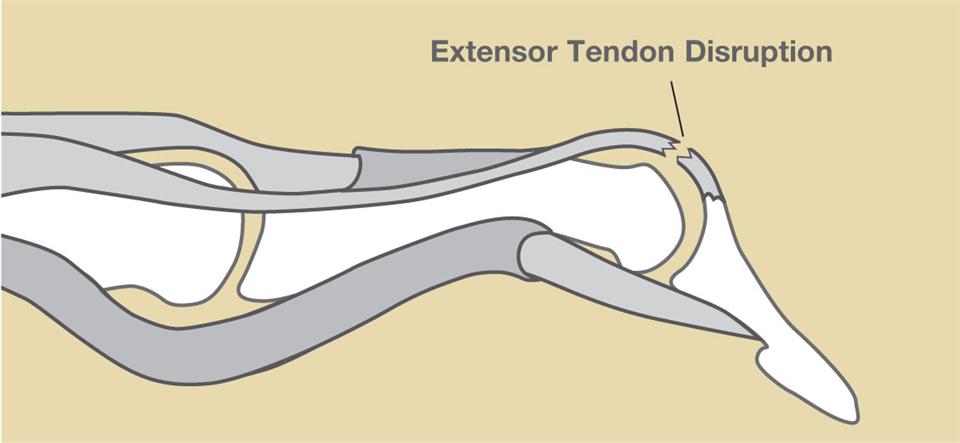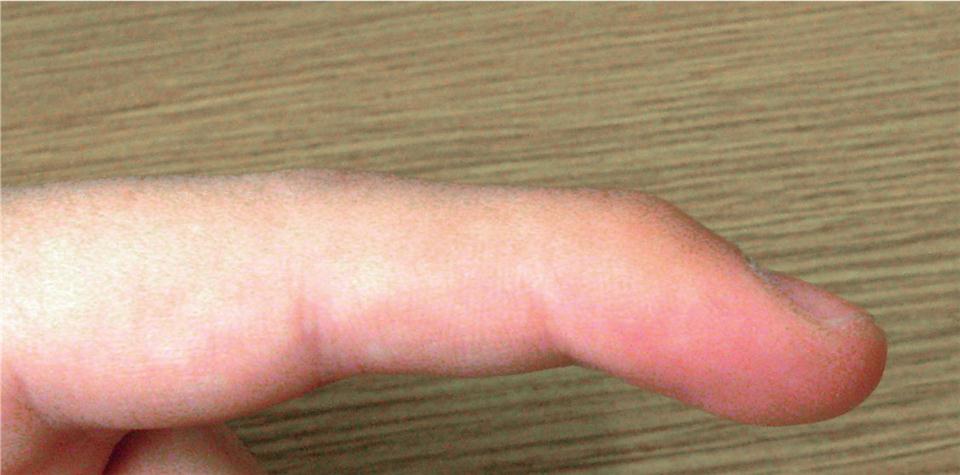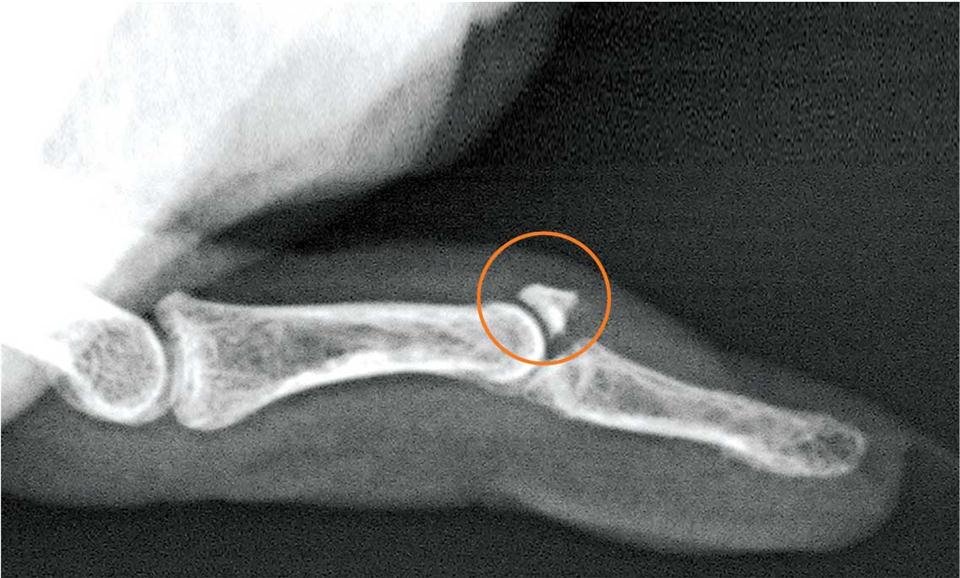Mallet Finger
What it is

Mallet finger is an injury which leads to disruption of the extensor tendon as it inserts into the tip of your finger. It can occur in any finger. The disruption can either be the tendon ripping off the bone (soft tissue mallet), or the tendon ripping a piece of bone off with it (bony mallet fracture). It usually occurs when the end of the finger gets "jammed” by a ball or a solid object such as a wall or the floor. If a mallet finger is not diagnosed and treated appropriately, it can lead to further deformity in the finger.
Symptoms

A mallet finger injury usually causes pain and swelling immediately in the finger. The patient will notice that the last joint in their finger, the distal interphalangeal joint, will droop down as they lose the ability to extend it actively.
Non Surgical Treatment
Most mallet finger injuries, both soft tissue and bony, are best treated with non operative splinting. This is done with a small splint which holds the joint extended but allows the rest of the finger to move to prevent stiffness in other joints. The splint must fit very well and is usually custom made by a hand therapist. The splint is worn for 6 weeks and must remain on 100% of the time. Any flexion of the joint will cause tearing of any new healing tendon. Because of this, patients usually need more than one splint so that they can bathe and then change the splint out for a dry one while holding the finger straight. After 6 weeks of full time splinting, the splint is worn at nighttime for 6 weeks. The expectation is that patients will have minimal drooping or "lag" in the joint at the end of treatment.
Surgical Treatment

There are a few situations in which surgery is necessary for a mallet finger. If the non operative splinting is not effective or the patient is unable to be compliant, a pin can be surgically placed into the finger to hold the joint in extension. This is sometimes necessary if people have jobs which require constant hand washing and therefore wearing a splint is not feasible. Pinning may also be necessary in bony mallet fractures which include a large part of the joint surface or lead to joint instability. These are all factors that are best assessed by a qualified hand surgeon. In any case, surgery is performed as an outpatient under local anesthesia with or without mild sedation based on patient comfort. General anesthesia is usually not necessary.
Post-operative Recovery
The pin usually needs to be protected with a custom made splint. The pin is removed after 6 weeks in the clinic by your surgeon. This is not very painful at all. Nighttime splinting is then done for 6 weeks. Formal therapy is usually not necessary.
If you have suffered a mallet finger, give our office a call today to get in and be evaluated. 715-907-0900.
All Images Copyright American Society for Surgery of the Hand
